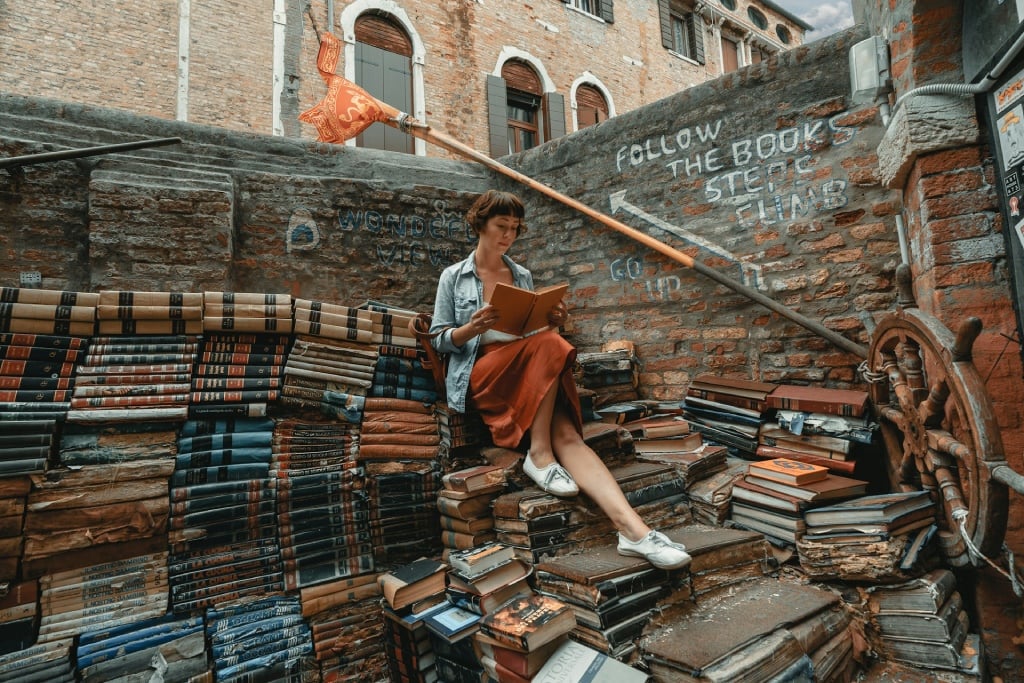This year, December 8th falls on a Friday, meaning we get a day off work (plus, if you work in Milan, you might get a bumper four-day weekend due to a local holiday on the 7th.)
The date unofficially marks the beginning of the Christmas period in Italy. But officially, it’s a Catholic holiday with a meaning that people are often – perhaps understandably – confused about.
What are we celebrating?
This Catholic feast day, usually referred to by Italians as l’Immacolata, marks the Immaculate Conception, which many may imagine was Mary’s conception of Jesus.
In fact, it actually marks the conception and life of Mary herself. Her mother Saint Anne became pregnant in the usual, biological way, Catholics believe, but the conception was ‘immaculate’ because God intervened, absolving Mary of original sin.
READ ALSO: Calendar: How to make the most of Italy’s public holidays in 2024
According to Catholic dogma, all humans are born with original sin, which is why babies are baptised shortly after birth to make them ‘worthy’ of entry to Heaven. But Mary was never tainted by original sin, and lived a ‘sinless’ life, kept ‘immaculate’ from the moment of her conception because God knew she would one day give birth to Jesus Christ.
While the event has been marked since as early is the seventh century, December 8th was first officially declared a holy day by the Vatican in 1854 by Pope Pius IX.
How is it marked?
For most people, this date means a day off work (when the holiday falls on a weekday) and getting together for a big family lunch.
But special masses and public ceremonies are held in towns and cities across the country to mark the occasion.
In recent years, coronavirus restrictions have meant the usual gatherings and public events weren’t possible, but they should be able to go ahead in 2022.
Usually on December 8th, the pope lays a wreath at the foot of the 12-metre tall Colonna della Immacolata, by the statue of the Madonna in Rome’s Piazza Mignanelli, while members of the Italian fire service place another floral wreath on the arm of the statue.
There are plenty of other celebrations creating a festive atmosphere in streets and squares across the country, with parades, music and street entertainment.
In Abruzzo it’s traditional to celebrate around a bonfire, with fire symbolizing purity, fertility and love. Other places hold torchlit processions and firework displays.
Does this mean everything will be closed?
Because the holiday falls during Advent, many shops in bigger towns stay open to allow for Christmas shopping.
However, make sure you check transport before trying to go anywhere, as most bus and rail routes will be running on a limited service.
READ ALSO: The food and drink you need for an Italian Christmas feast
As usual, government offices, post offices, banks and schools are closed for the public holiday, so it’s not a good time to catch up on admin.
If it falls on a weekend, or you’ve got a day off work, the best thing to do is make like the Italians, and spend the day eating a big meal and enjoying the festive displays.
The beginning of Christmas
You may also notice that many towns put up their Christmas trees and other decorations in the days around December 8th.
Unofficially for many people in Italy the Christmas holidays begin on December 8th meaning many take an extended holiday, and everything (especially anything administration-related) noticeably slows down from this point on.
Especially if you’re in a smaller Italian town, you might want to get any paperwork done before this period – or else you may have to wait until the Italian Christmas period ends, after January 6th.




 Please whitelist us to continue reading.
Please whitelist us to continue reading.
Member comments